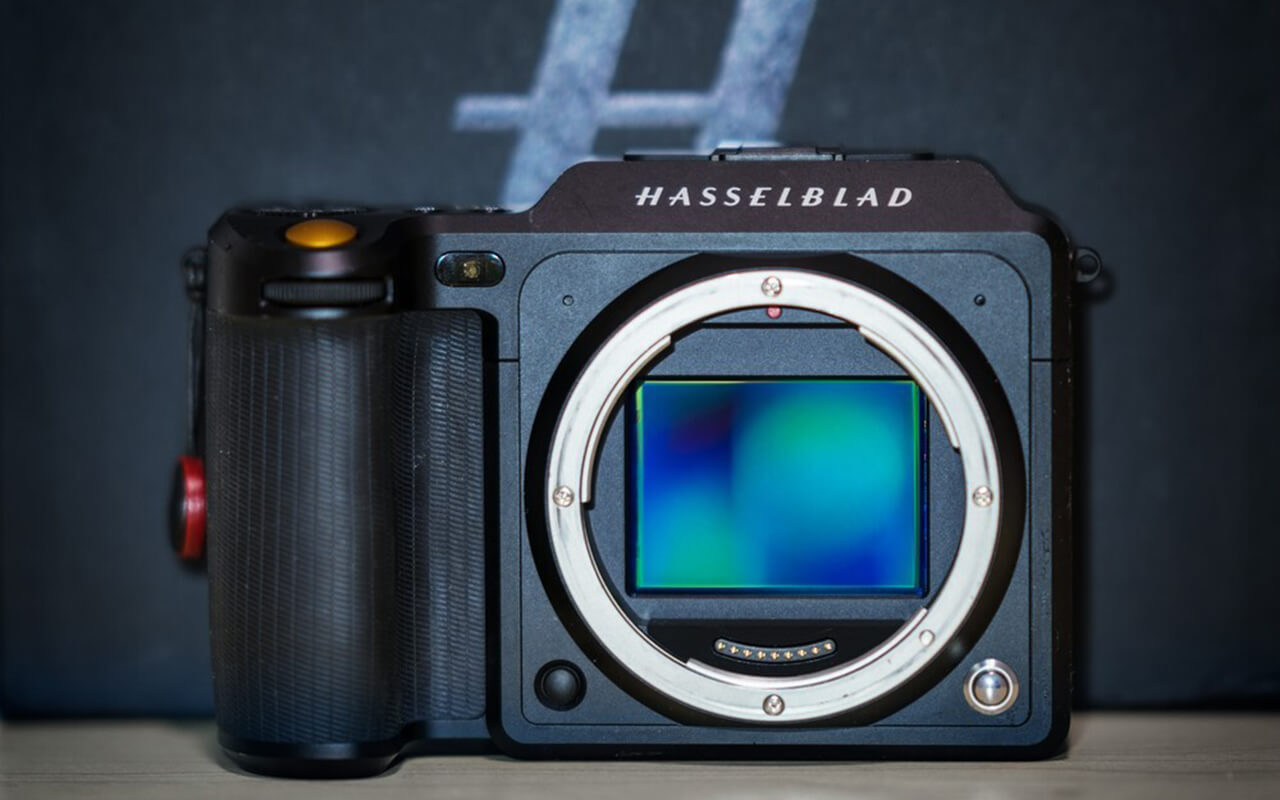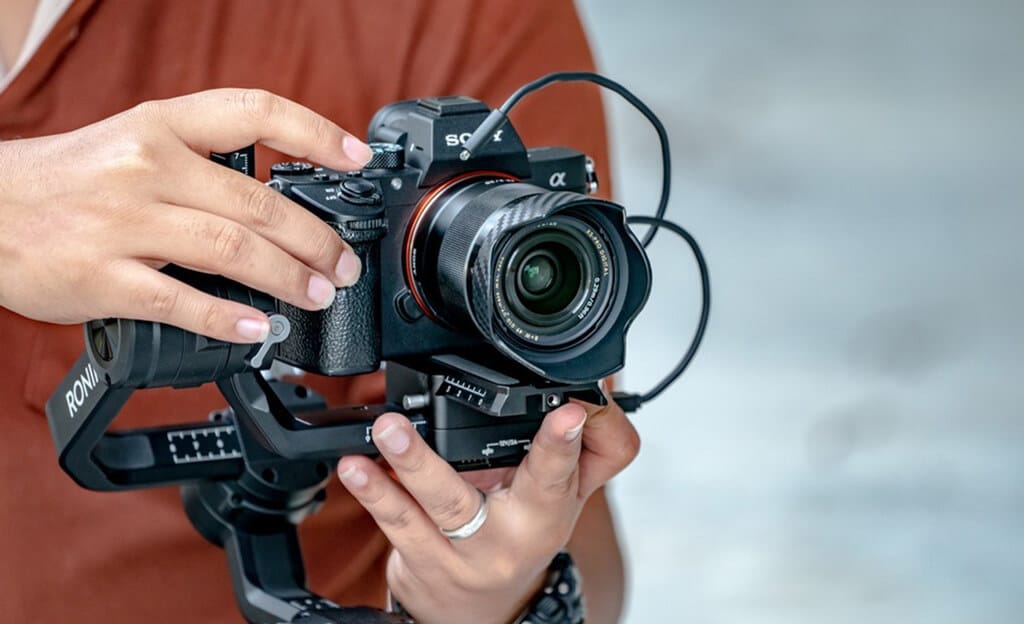Photography is an ever-progressing art. New ways are getting developed every day for doing the same old things. Maybe a day will come when the most advanced camera will just be a paper-thin device. Who can tell?
That’s a discussion for another day. Today, let’s talk about something else. There’s an ongoing debate: lens stabilization vs camera stabilization - which technique is the best?
As a photographer, you must’ve come upon this question. But I’m sorry to say, there’s no easy answer. I wonder if there’s even an answer, to begin with? Don’t worry, I’ll not get philosophical.
Even though I probably can’t provide an “Accurate” answer, I’ll definitely try to make finding it easier for you. There’s actually a lot to think about and a number of ways to try before you can find the best image stabilization technique.
This kind of diplomatic situation is very common in the field of photography. What works for one, may not work at all for the other. So, as you read through this article, you should also consider your experience and if it says the same as me.
Table of Contents
Let’s Begin with Stabilization
Photographers are always wary of their hands shaking while taking a shot. It can easily ruin an otherwise excellent photo. This is where image stabilization comes into play. It means to keep the camera as steady as possible while capturing images.
There are just two ways of stabilizing the camera: Lens-based and In-camera. A combination of the two is also available, but not many cameras can offer it at the moment.
I believe the Panasonic Lumix DMC-GX8 is one of the few such devices that can offer dual stabilization. However, for now, we’ll focus mainly on individual methods.
The main idea is to be able to capture an image exactly the way we see. But if the camera shakes for any reason, the resulting image doesn’t come out as desired.
That’s why we need stabilization so that can capture better quality images even in low-light conditions. Because that’s when we need to capture photos slower than usual to take in as much light as possible.
You see, at a lower shutter-speed, the camera can catch movement more. But this also means, your image may get blurred if there’s any shaking. In such cases, stabilization helps a great deal to produce sharp images.
You don’t always need the help of technology to do this. One can physically stabilize the camera by fixing themselves up, like, against a wall or something. Not only is that uncomfortable, but it’s also not fully effective.
A tripod is quite handy in stabilizing when taking shots with long exposures and longer shutter-speeds. But carrying one around is not that fun.
There’s one method that may help out when you have to hold the camera in your holds for the whole shot. It says that you shouldn’t handhold your camera if the shutter-speed is lower than the equivalent focal length.
That is, say you have a 400 mm lens. Its shutter-speed shouldn’t go below 1/400th of a second when you are using it in a handheld condition.
Unfortunately, this method doesn’t always work out. After all, a shot depends on a lot of factors which can all lead to blurry images.
The Two Main Types of Image Stabilization

First comes the Lens-based stabilization which is made with a floating-type lens element. It’s electronically controlled so that it moves in a direction opposite to the movement of the camera. That is, if the camera shakes the lens will remain fixed.
This type of stabilizing process is best suited for longer length lenses as it delivers a very smooth operation. Sadly, however, this feature is not available in most of such lenses.
As far as I know, telephoto lenses are the ones that normally come with this type of stabilization. But they cost extra because of having this very feature. So, they are not really an affordable option.
Then there is the In-camera stabilization where instead of the lens-element the very sensor of the camera moves. That is, the sensor shifts itself to accommodate the movements of the camera.
Since the stabilizing feature is inside the camera, you can use different lenses with the same body. This is an affordable solution, true, but not the best one.
You see, for whatever reason, sensor stabilization doesn’t give the smoothest results especially when you’re using lenses with longer focal lengths.
Brands like Canon and Nikon want to give the photographers the best results and that’s why their cameras don’t come with sensor stabilization. Meanwhile, Tamron and Sigma make lenses with image stabilizations that are compatible with both Canon and Nikon.
Panning
You can consider this as an alternative to the previous two stabilization methods. With this feature, the camera can move side to side, or pan. This lets you keep a moving subject in view. This is sort of like panorama, but not necessarily with a very wide angle.
However, this feature is only fully effective when the motion shake is already reduced.
There are some cameras, like beginner-level DSLRs and mirrorless ones, which don’t support this feature. They don’t do well with panning and usually ends up producing more blurriness.
The only way to get rid of that is by turning off the image stabilization. You’ll just have back up against a wall or use a tripod.
Lens Stabilization vs Camera Stabilization
Times are changing and so are the cameras. Every day something new and innovative is developed to alleviate the overall photography experience. So, we must try to find out which kind of stabilization is better.
In the earlier days, the undeniable setback of in-camera stabilization was that you didn’t get to see the stabilization changes through the optical viewfinder. This was mainly the case with traditional DSLRs.
However, with the introduction of electronic viewfinders or EVFs, mirrorless and SLR cameras allow you to see the stabilization effects. You don’t need to rely solely on the LCD anymore. Sadly, Nikon and Canon haven’t yet used this feature in their cameras.
So, it seems that in-camera stabilization has been able to overcome its biggest setback. I suppose it’s high time we reconsider which one is truly the better option.
So, When Did the Debate Begin?
If you go 10 years back, you’ll see that majority of the photographers were using film cameras. The digital cameras are actually quite new compared to their predecessors.
So, here’s the thing, integrating in-camera stabilization into the film cameras wasn’t an easy feat. In fact, it was so costly, it was crazy to even think about it. That’s why the giants Nikon and Canon brought forward lens stabilization.
The price of the first digital cameras was already high. So, it would have been rather stupid to expect the then photographers to suddenly shift to digital. Moreover, they had been working with film since the start and so they were not that sure of the new gears.
But you see, there are other camera companies besides the two, like the Konica Minolta. They had to stand toe to toe with the two giants, or they’d have lost their market. So, they started incorporating sensor-based stabilization into their digital cameras. Others followed them afterward.
Thus, the debate began, which is better - lens stabilization or camera stabilization?
Now, in-camera stabilization had one huge advantage. You could use any lens including the film ones with the same camera body.
However, it wasn’t without faults. You couldn’t see the sensor-based stabilization through the optical viewfinder was it was blocked by the mirror.
Plus, it didn’t work with the long telephoto lenses. Having a longer focal length meant the shifts would be larger too. But the sensors’ movements couldn’t keep up with that.
In all this, one thing remained the same: in-camera stabilization is more affordable than the lens-based option. They both came with one limitation or the other, and so the debate continues.
There’s no doubt, however, that Canon and Nikon ruled the market triumphantly. They kept updating their lenses and so continued to make more money out of it.
The thing about us photographers is that we need to have the right equipment in order to face all the challenges our area of work has to offer. You may not get it when you have only started photographing. But as you get more involved in this art, you’ll soon begin to realize how right I am.
The Correct Term for ‘Stabilization’
Before we go deeper, I think it’s best to get this out of the way. The correct term is surely Image Stabilization. I mean, it’s on Wikipedia, who am I to contradict?
Nevertheless, other terms like Vibration Reduction and Optical Stabilization are also used. Rest assured, they all mean the same thing, and as long as you know that you can use any of them.
Due to branding issues, certain companies use certain names. Plus, there is the matter of differentiating one brand from the other. For example, Canon uses “Image Stabilization (IS)”, Nikon uses “Vibration Reduction (VR)”, and Sigma uses “Optical Stabilization (OS)”.
Advantages and Disadvantages of Lens Stabilization

First, let’s talk about lens-based stabilization and how it’s better or worse than in-camera stabilization. Not to worry, we’ll get deep into this. Let’s see if we can come to a STABLE conclusion.
Advantages
I mean hey, talking about disadvantages straight up doesn’t seem fair. “Perks before quirks” I always say. So, what are the actual benefits you’ll get? Let’s discuss.
Lenses Can be Fine-Tuned
Canon and Nikon are known for their continuous preference for lens-based stabilization. One of the reasons behind this is that an individual lens can be tweaked and fine-tuned for particular situations. This is something in-camera stabilization can’t do.
This means that you can get multiple options for image stabilization from which you can use the one you need. The manufacturers tweak the image stabilization features depending on the size, weight, and focal length of the very lens.
In short, there can be a lens suitable for a specific situation. There are some IS lenses that use an “Active” mode which comes in handy when the photographer is shooting from a moving car etc.
In fact, some of the recently introduced smart lenses can detect the type of movement it is encountering. Then, it disables or enables image stabilization automatically.
More Suitable for Long/Super Telephoto Lenses
The longer the focal length of a lens the larger sensor movements. But in-camera stabilization can’t accommodate such requirements. As a result, lens-based options turn out to be more suitable.
Great for Low-light Conditions

When shooting in low-light conditions, you always need to rely on both the lens and the camera body. If you’re using lens-based stabilization, you can get better results under such circumstances.
Here’s why: the image becomes stabilized by the lens before it reaches the sensors. So, the camera metering can produce more accurate images with better quality.
There are some other advantages that are only applicable under certain conditions.
Visibility in the Viewfinder
I’ve already mentioned that one of the biggest disadvantages of in-camera stabilization was that you can’t see it through the viewfinder. Fortunately, with the introduction of EVFs, this is not such a big deal anymore.
However, EVFs are only available in Sony SLT and mirrorless cameras. DSLRs still use optical viewfinders and so lens stabilization is more suitable for them in this regard.
You Could go Cheap on the Body
Since all you had to do was buy IS equipped lenses in the past, you had the opportunity to use cheaper camera bodies. But today, in-camera stabilization has become much more affordable. So, this no longer holds.
Compatible with Film Cameras
There are photographers who think film cameras are superior. Then some think the very opposite. I am mostly in the middle of these two groups.
So, how much of an advantage it is for an IS lens being compatible with film cameras is up for debate. Moreover, Nikon has been limiting the options for film cameras that can work with VR lenses.
Disadvantages
Now, the moment of cold hard truth. Now that we’ve discussed the advantages, what are the drawbacks here? And what kind of impact will it have on your shooting ventures? Follow my lead.
Not All Lenses Have it
You’d think that since Nikon and Canon are leading in IS lenses, all of their lenses would be equipped with image stabilization. But in reality, prime and wide-angle lenses are not fitted with this feature. As it so happens, I use these two lenses a lot and so it’d be great if they also come with image stabilization.
Expensive
Non-IS cameras are okay-ish, but I can’t help but feel a little bit iffy. I mean, IS lenses have got something extra compared to their non-IS counterparts. So, the higher price makes sense. But the difference in their rates is too high.
Not Good for Lens Bokeh

Trust me, when I first learned this I was just as surprised as you. When image stabilization is involved, the optical path of the light passing through the lens is shifted. This in turn negatively affects the lens’ bokeh feature.
Annoying Sound of the IS
This may not apply to all IS-equipped lenses, but there are some which do make a high pitch sound. This annoys me. The sound also gets recorded when you’re shooting videos using IS lenses.
New Advancements Mean You Have to Update the Lenses
I noticed this when Nikon began to improve their VR features. They updated their lenses with the latest VR II. The problem here was that, while some lenses were almost similar to their previous versions, the only difference was in the VR version.
Advantages and Disadvantages of In-Camera Stabilization

Now that you know a bit about lens-based stabilization, let’s see what the other has to offer. Let’s discuss the positives first.
Advantages
Compatibility
The main advantage of in-camera stabilization is that the body will be compatible with almost all lenses. The only thing holding it back is that not all lenses work with all camera bodies.
So, as long as the lens can send its focal length and focal distance to the camera, it is good to go. You can even use older lenses and those by third-party manufacturers.
You Spend Only Once
For the reason mentioned above, you just need to spend only once for buying the camera that has sensor-based stabilization. Then you can fit any lens to it and start shooting.
In Case of Upgrade
Cameras will keep getting upgraded until the end of time. You can simply get a new and improved camera body and still use all the lenses you already had.
Lenses Will be Cheaper and Smaller
A lens becomes bulky when extra mechanisms are included inside it. That’s why when you don’t need image stabilization in your lens, you can easily buy cheaper and smaller ones. They are also easier to produce.
Lenses Will Be Less Fragile
Having image stabilization means for a lens to have additional components inside it. So, when a lens wouldn’t have it there would fewer chances of it faltering.
Favorable for Bokeh
As I already told you that if the optical path of light shifts inside the lens, it affects the bokeh. IS lenses tend to do this a lot. But when your lens doesn’t have IS, there will be no shift and so the bokeh will remain unaffected.
No Annoying Sounds
This is my most favorite thing about in-camera stabilization. You can use regular lenses and the only bit of sound they produce is by the autofocus motor. That’s why it’s great for recording videos as well.
All this is well and good. What about the unwanted stuff that you get anyway? Not to worry, I’ll be honest with even the limitations.
Disadvantages
Less Accurate in Low-Light Conditions
When you use an IS lens for shooting in low-light conditions, the photos come out great. This is because the sensor receives an already stabilized image.
But when you are relying solely on the sensor to stabilize the shaky image, the results are not always satisfactory. The metering and AF performance gets affected negatively in such situations.
Doesn’t Work Well with Super Telephoto Lenses

Lenses with longer focal lengths require the sensors to move more in order to compensate for the shaking. You’re expected to know this, right?
But inside the camera, the sensor can only move so much. As a result, sensor-based stabilization doesn’t produce good quality images when you use a long/super Telephoto lens. The stabilization effects will not be up to the mark.
In-camera stabilization used to have some more disadvantages but with the introduction of modern cameras, they are not applicable anymore.
You Can’t See the Stabilization Effects in the Viewfinder
This only applies to DSLRs that use optical viewfinders and mirrors. However, with the development of mirrorless cameras and EVFs, you can easily see the stabilization effects in the viewfinder.
The Camera Body is More Expansive

In the earlier days, like 20 years ago, the cost of integrating stabilization into the camera body was pretty high. That’s one of the reasons Canon and Nikon chose to incorporate IS into their lenses instead. However, today it’s very affordable to produce sensor-based cameras.
Film Cameras Don’t Come with IS Features
Well, this still holds. The thing that has changed is that most photographers nowadays shoot digital. So, this disadvantage bothers only a handful of people. That is, if you shoot on film you’ll not get in-camera stabilization.
So, What’ve We Learned So Far?
By now you have read through the good and bad of both the stabilization technologies. You should agree with me when I say that neither of them trumps the other. That is, we simply can’t throw away one type of stabilization and call the other victorious.
Most of the people who prefer in-camera stabilization do so because those cameras work with almost all lenses. Of course, they could be doing so for the other advantages too. But it’s still a big deal that cameras with sensor-based stabilization don’t do well with telephoto lenses, both long and super ones.
I’ve mentioned more than once that EVFs and Sony’s SLT cameras have made sensor-based stabilization better. It is true, no doubt. However, I must admit, the overall outcome is not so effective especially when used for sports and wildlife photography.

What Would Your Path Be?
So, what should you do then? Which side should you trust? Unfortunately, it’ll come down to your personal preference by weighing the pros and cons of both lens and camera stabilization.
Nevertheless, we should also try to find a solution to this century-old debate. What I can think of is only by combining both of them can we get some satisfaction. That is, brands should incorporate image stabilization in both the camera body and the lens.
We need to keep two things in mind as well. The first thing is that lens stabilization and camera stabilization can’t work simultaneously. Not only would they mess up the overall operation but also would cancel each other out.
That’s why there should be an option for the user to turn on/off the stabilization effects of either the camera or the lens, depending on their needs.
The second thing is that cameras with sensor-based stabilization require lenses with bigger image circles. That is, the image has to be big enough, or the stabilization effects wouldn’t work.
The only way to achieve such cameras and lenses if brands like Canon and Nikon agreed to update their products. But they won’t, and this doesn’t seem like changing anytime soon.
They have built a market where their individuality reaps huge amounts of profit. I can’t blame them, and it’s not like their products are of bad quality. But a little more flexibility would be appreciated.
Here’s My Final Word on the Topic
To be honest, I can go on and on about why these brands should think about in-camera stabilization. Or at least make their lenses compatible with cameras that use that type of stabilization. But I’ll not be the first person to do so, and definitely not the last.
Moreover, you are here to find out which is better, lens stabilization, or camera stabilization. I haven’t been able to provide you with a clear answer, because there’s none.
You can try out both the options, if possible, and see what works best for you. It mostly depends on the type of photography you do.

